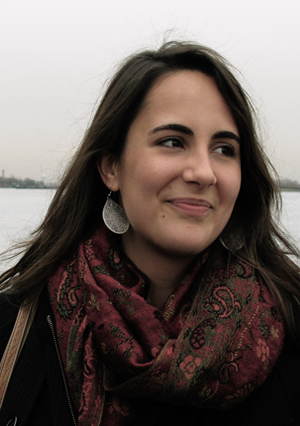
Meet Lena Groeger: @ProPublica’s newest news app developer
As ProPublica’s newest news app developer, Lena Groeger is helping the investigative news organization expand its field-leading efforts in data driven news.
Developers on the app team create software that lets readers interact with news stories, making them more relevant to people’s lives. Think of projects like the Dollars for Docs database, where people can find out if their doctors have received payments from drug companies.
Groeger was hired recently as part of a Knight-funded expansion that will not only allow the team to develop more apps across a variety of subject areas, but build the field by providing a job shadowing program for journalists nationwide.
In a conversation with Knight, Groeger shares what helped prepare for her role, some of her recent projects and what she thinks about the future of data, design and journalism.
What’s an example of a recent project you worked on?
L.G.: I worked with reporters Paul Kiel and Cora Currier, who were researching where money from the mortgage settlement was going in each state. Once we had the precise data (the five biggest banks agreed to pay over $2.5 billion to 49 states and the District of Columbia), we ultimately decided an interactive map would be a good way to visualize the information. It was a group effort where the process was just as interesting as the outcome. I wrote more about it in a blog post “How a Map That Wasn’t a Map Became a Map.”
Another story looked at how different claims about drone deaths compared over time. Drone death estimates vary widely in the media, but one would think the government would keep at least a nominally “official” count. Apparently, they don’t. The challenge in this graphic was to link together different aspects of the story in a coherent and understandable interface. After we laid out the claims, we decided that it would be helpful to “highlight” certain contradictory claims, so people could easily see what we were describing. We added the right-hand column, which also linked to Justin Elliot’s story.
How do you decide what kinds of projects to take on? What interests you?
L.G.: Sometimes I will pitch an idea I think would work best, or suggest a specific format for a project, whether it’s a map, a timeline, an interactive graphic or something else. Other times I have gotten paired up with a reporter already working on a data story. It’s been flexible and there have been a range of projects, that’s very characteristic of what goes on at ProPublica. Your role is less important than the way you can tell a story.
What’s your background? How have some of your existing skills been helpful in your new role?
L.G.: I have a strong background in science and journalism, my master’s degree is actually in Science Journalism. Scientists are constantly doing all kinds of things with data, tracking it, looking at it for patterns etc. Translating that to journalism was a natural progression. Graphic design has also always been a hobby of mine, I’ve taken classes at the Rhode Island School of Design so I am familiar with website design software like Adobe Creative Suite and Photoshop. I have also been learning more coding skills. Sometimes computer language is daunting. My job is a combination of all of these things, I realized there’s a place in online news where design skills do matter and that they can be used for a journalistic purpose.
What’s the best thing about your job?
L.G.: I learn something new every day. There’s a satisfaction I get in coming up with an idea for a project, collecting and analyzing the data for it and then building it out into something more realized. Sometimes it will take me hours to figure out how to do something in Ruby on Rails [an open-source web development framework that lowers the barriers of entry to programming]. Another developer might walk by and show me how to do it in two minutes. I’m constantly being challenged.
The field of data driven journalism is growing quite fast. Where do you see it heading?
L.G.: It’s only going to continue to grow. Software developers and journalists don’t have to be two different groups of people, there’s a combination of skills necessary to sift through massive amounts of data. We can now tell stories that we never could have before we had these new tools and capabilities. We are seeing all sorts of ways that the work of programmers, designers and journalists can come together. Also, data visualization is taking off in all kinds of interesting ways. It’s been really great to see people experiment.
Are there challenges associated its growth?
L.G.: Absolutely, a big one for us is sorting through [data] and finding what is relevant to the story you’re trying to tell. In this big mass of data, things can be difficult to find. It’s definitely good that things are more open, but we have to be smarter about sifting through it all and using it to tell a story.
What’s it like working at ProPublica?
L.G.: It’s like a big supportive family. Everyone is interested in what everyone else is doing, from the top all the way down to the interns. People want to find the best ways to tell stories and make connection with our readers. We care about our reporting having real world impact and we’re encouraged to to explore new ideas and new forms to make that happen, whether that means making a music video or writing an in-depth story. It’s a place dedicated to openness and experimentation.
Recent Content
-
Journalismarticle ·
-
Journalismarticle ·
-
Journalismarticle ·


